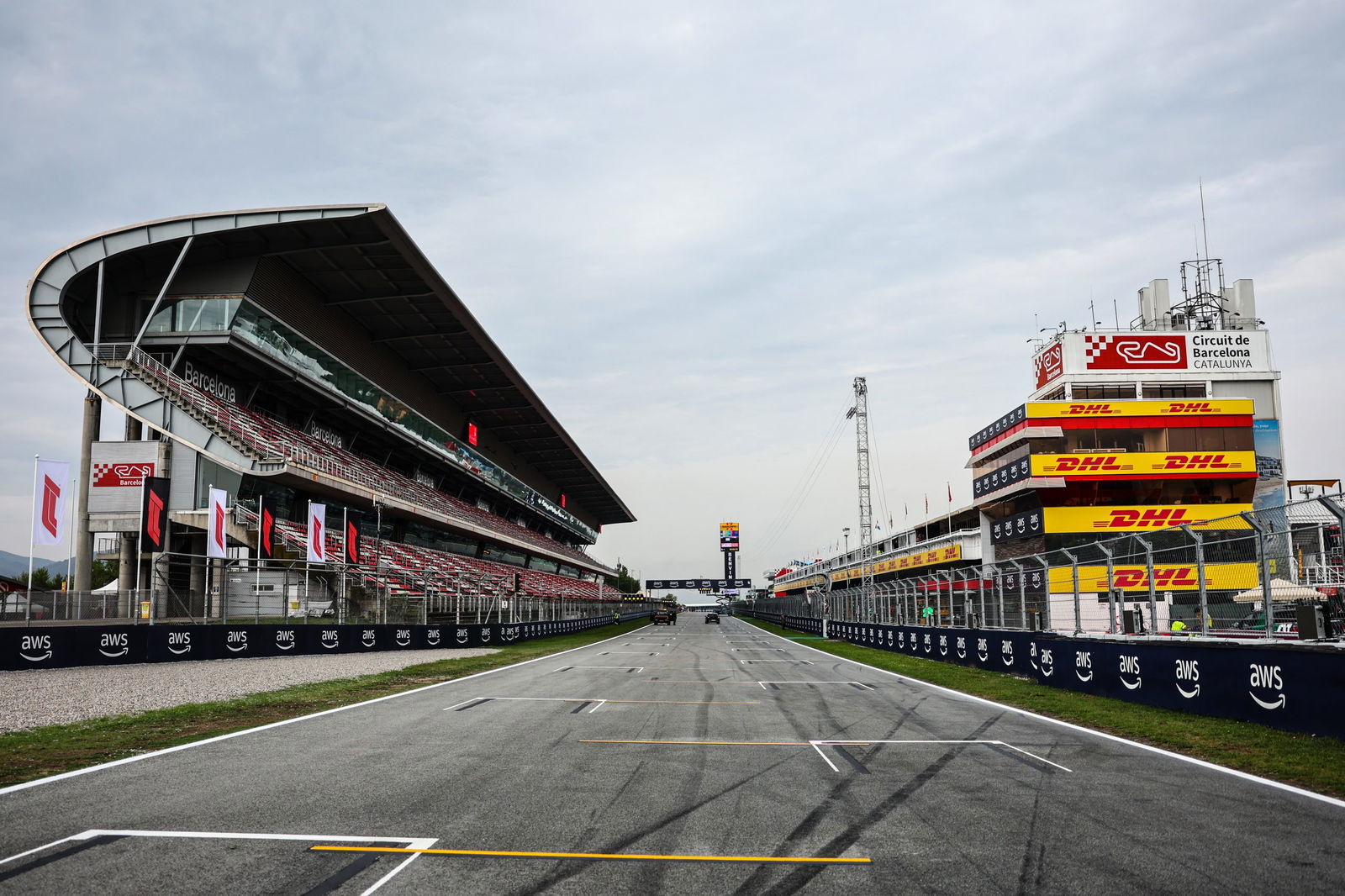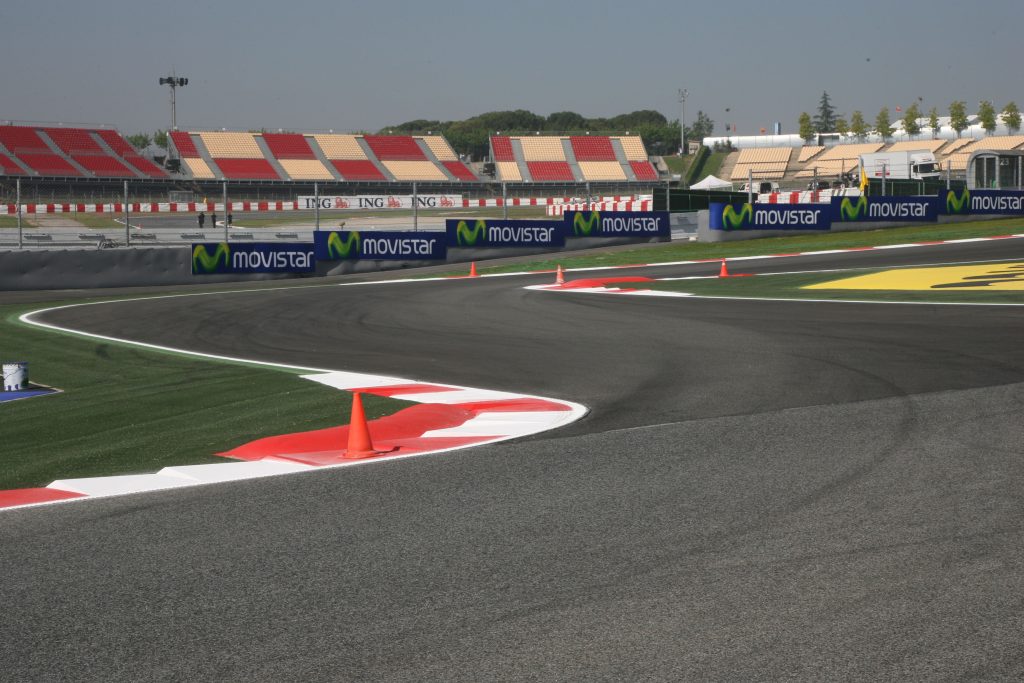

The 5.47km, 20-turn, semi-street track to be built around the IFEMA Convention Centre has been awarded a 10-year contract from 2026, ending what will be a 35-year run in hosting the event at Barcelona’s Circuit de Catalunya.
A race at the venue, situated 17 miles northeast of Barcelona, and which has been a staple of the F1 calendar since its debut appearance in 1991, is far from dead in the water.
With a contract through to 2026, F1 CEO Stefano Domenicali insists talks remain constructive to see if it has a future.
You have to believe that almost certainly, Domenicali will be demanding considerable improvements to the circuit’s ageing infrastructure, potentially even major changes to the track itself.
When Barcelona arrived on the scene, it was modern, progressive, a forerunner of its time, and one that other venues sought to aspire to due to what were then state-of-the-art facilities as a newly constructed track.
The fact that to this day, though, the 1991 race remains the fan favourite when it comes to that circuit, with Nigel Mansell passing Michael Schumacher, Ayrton Senna – famously going wheel to wheel down the long straight before outbraking him into Turn 1 – and Gerhard Berger to clinch victory, says it all.
Over the years, as the performance of the cars has improved, the action on track has declined, more often becoming a case of following the leader due to its severely limited passing opportunities.
Another damning statistical indictment is that the race winner has started on pole 24 times in 33 races.
The only drivers to win in Barcelona and not start on the front row have been Schumacher (from third in 1996), Fernando Alonso (from fifth in 2013), and Max Verstappen (fourth in 2016).
The anomaly is that the Circuit de Catalunya is loved by the drivers from the perspective of the challenge it provides given its mix of medium and high-speed corners, drawing the best out of the cars.
It is why Barcelona was long favoured as a pre-season test venue as the teams knew if its car could deliver at this track, then it could pretty much deliver anywhere.
For Barcelona, though, even its pre-season testing privileges have been revoked, instead handed to Bahrain as the desire for warmer, sunnier climes was desired. The Circuit de Catalunya in mid-February has often not been much fun in the past.
As for on track during a grand prix, with cars unable to get close enough to pass, the spectacle has been found sorely lacking, to such an extent most drivers would certainly pitch it near the bottom end of the scale if asked to rate current F1 circuits from best to worst.

In 2007, officials did attempt to improve the show by introducing a chicane before the final corner, in the hope the cars would be close enough heading into the straight to then attempt a pass into Turn 1.
Over time, however, that chicane became more of a hindrance than a help, leading to its removal before last year’s race and reverting to a configuration almost identical to its original 1991 Herman Tilke-designed layout.
Behind the scenes, what was once a beacon of modernity has slowly fallen behind the times in comparison to the facilities now prevalent at many of F1’s amphitheatres.
The sport has raised the demands on track owners and officials to provide a showcase for the sport whose business model has surged on the back of Liberty Media’s ownership since 2017, and who have come to expect the very best to be provided by its hosts.
Barcelona falls a long way short in that category, and despite attempts at upgrades in recent times, it still looks aged and as if it has seen better days.
And so to Madrid, whose 10-year contract is in keeping with F1’s demands of long-term commitment.
Over the past few years, São Paulo, Abu Dhabi, Miami, Canada, Hungary, Qatar, Bahrain, and Australia, have all penned deals taking their events into 2030 and beyond. Melbourne’s Albert Park runs to 2037.
It is understood Barcelona could offer no such allegiance, which is why its contracts in recent times have all been short-term.
Tellingly, Domenicali said: “I’m very pleased that it’s a deal that takes us to 2035 – it’s a long time.
“This is the objective of F1, with either new or more established promoters. It allows everyone involved to plan the future and invest in the future as it is a guarantee for the promoter, for our partners, for our teams and for our sport. It gives everyone long-term visibility.
“If you look at the past, the renewals were two years, three years or five years maximum. Now all our new deals are going in the direction of being very long. And if they are short, there is a reason.”
Whilst F1 in Spain is enjoying a renaissance, with its metrics for TV audience and social media engagement rising significantly last year – a competitive Fernando Alonso likely playing a major role – it seems unsustainable to have two grands prix in the country.

F1 may be talking a good game regarding Barcelona’s continued chances beyond 2026 but with other nations eager to host, other pastures new are surely the way forward, hence why Madrid is now on the scene.
And then, of course, there is the bottom line – money! If the reported hosting fee of £400 million (AUS$771m) is to be believed, that is beyond Barcelona’s current reach.
The suggestion is that figure will effectively be recouped in year one as it has been estimated the event will generate €450 million (AUS $744m) to the city’s economy per year.
Even though the track is 10 miles away from the centre and closer to the airport than the main attractions of Madrid, there will always be that initial spike of interest with any new event.
It is a win-win for both sides, providing the product on offer is good.
The problem with street venues, once the often superb helicopter overhead shots have been dispensed with and the cameras are trackside, you could be anywhere in the world as there is little background to go off. It was the case with Las Vegas last year.
Yes, the night-time neon of the Strip was remarkable from up high looking down, but at ground level, as the cars flew past the concrete barriers, it was hard to differentiate Vegas from Singapore, for argument’s sake.
Worse still for Madrid is that the race is not in the heart of the city, so few landmarks to identify it, other than the Convention Centre itself.
At least with a permanent facility, you could arguably identify all of those currently on the calendar by its background.
But all the money in the world and the most spectacular of backdrops count for nothing if the action on track does not deliver. Vegas at least backed up all the pre-race hype with one of the best grands prix of the year.
Hopefully, Madrid will not prove to be another Valencia, the Spanish city that hosted the European Grand Prix from 2008 to 2012.
Built around a port, and with views across its beach to the Balearic Sea, Valencia was sadly dull and short-lived.
Two and a half years away from its maiden hosting, the pressure is already on Madrid to prove to F1 why the Spanish Grand Prix is no longer fit to be hosted by big-city rival Barcelona.





















Discussion about this post